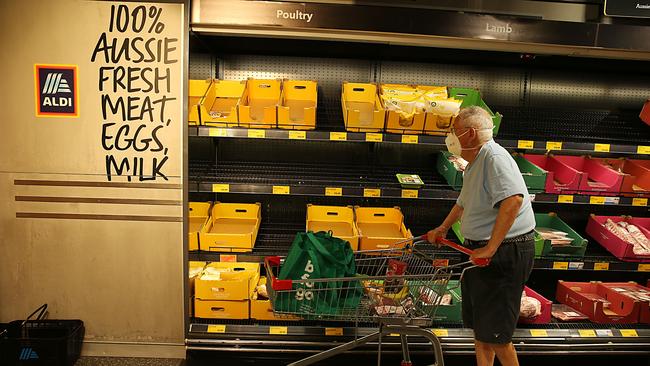Rising US inflation should be a warning to Australia and politicians making grand pre-election promises


What makes the current inflationary forces in both the US and Australia so different from anything we have seen in the past 20 years is the inability of enterprises to use global sourcing to curb local costs.
And given the possibility of a prolonged war in Ukraine, the deglobalisation of the world looks like being a new long-term trend as nations and companies look for ways to source more of their products and services locally, albeit at a higher cost.
And because countries like the US and Australia are awash with cash as a result of the overstimulation carried out by central banks, consumers are paying the higher prices.
Sharemarkets are torn between the booming current profits that are being generated by the prosperity in large sectors of communities and the fact that the era of very low interest rates has ended. In addition, any extended Ukraine war will maintain high energy and food prices.
China’s President, Xi Jinping, can see the danger and has ordered that his nation increase international buying of wheat and rice to increase the Chinese food security stockpile.
Although China has increased its local food production, it is still dependent on imports and Ukraine historically has been a major supplier. Xi is protecting China in case this war extends for a long time.
When there are fundamental changes taking place in the world, contrasting forecasts of what will happen to interest rates are sprayed like confetti. The people who back their forecasts with substantial sums are the bond investors.
On their reckoning, everyone in the US and Australia should expect substantial interest rate rises.
In the US, the community is preparing for these rate rises knowing that with inflation above 8 per cent and rising, the rate rises need to be substantial.
The US hope is that the higher interest rates will quickly slow both the economy and the inflation rate, allowing interest rate reductions next year.
If the deglobalisation movement continues to gather pace and the Ukrainian war drags on, it will be much harder to achieve a substantial fall inflation and interest rates.
Here in Australia we simply don’t believe the bond traders’ prediction that mortgage rates will rise from the current level of about 2 per cent to beyond 4.5 per cent.
The “bond traders are wrong” argument is put forward most clearly from Commonwealth Bank, which says that any interest rate rises above the 1.25 per cent mark would cause substantial damage to large sections of society – particularly those who bought homes with high borrowing over the past few years. House and share prices would fall. But the Australian bond market is sticking to its guns despite the CBA warnings.
Meanwhile, businesses are concentrated on labour shortages and difficulties in the supply chain.
This week Indeed economist Callam Pickering issued an alert, saying: “By the end of March, Australian job postings on Indeed were tracking 121 per cent ahead of their pre-pandemic level. The resilience of the Australian labour market throughout the pandemic has been nothing short of extraordinary. The jobs recovery in Australia has consistently outpaced our global peers.”
My interpretation of these stunning statistics is that Australians believe that the CBA forecasts of interest rates are correct and that the bond market is in “cuckoo land”. Nevertheless, CBA is alerting us that if the bond traders are right, the economic consequences to Australia would be catastrophic because, unlike those in the US, most Australian mortgages involve flexible rates.
But in the areas of industry that I talk to, there is sense of unease because cost structures are rising. Currently, most can pass cost rises onto prices because of the large areas of the community with spending capacity.
NAB chief economist Alan Oster says business purchase costs rose 4.2 per cent in the March quarter to be 10.6 per cent higher over the year – the highest rise since the bank’s survey of the costs started.
Labour costs increased 2.7 per cent on a quarterly basis in March, which was well above the previous 2 per cent record reached more than 15 years earlier.
These are exactly the sort of pressures that we saw in the US some months ago that have translated into 8 per cent-plus inflation.
The dumping of Australian bonds reflects the belief that we can’t simply isolate ourselves from the rest of the world on interest rates, because that would further fuel inflation via the lower currency.
Our politicians are conducting an election campaign that is completely remote from these dangers.







The continued 8 per cent inflation rates in the US are a warning to both the Australian nation and the politicians conducting their pre-prepared spree of election promises. We can’t divorce ourselves from the world.